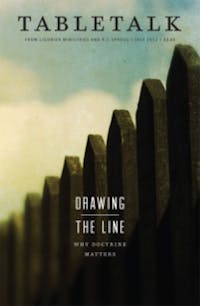
Request your free, three-month trial to Tabletalk magazine. You’ll receive the print issue monthly and gain immediate digital access to decades of archives. This trial is risk-free. No credit card required.
Try Tabletalk NowAlready receive Tabletalk magazine every month?
Verify your email address to gain unlimited access.
“Be not ashamed of your faith; remember it is the ancient gospel of the martyrs, confessors, reformers and saints. Above all, it is the truth of God, against which the gates of Hell cannot prevail. Let your lives adorn your faith, let your example adorn your creed.” These words from C.H. Spurgeon’s foreword to the Second London Baptist Confession of Faith are as poignant now as in 1855.
As the church at the beginning of the twenty-first century, we desperately need to return to our historic creeds and confessions, and we need to remember the ancient gospel of our forefathers as we contend earnestly for the faith once delivered to the saints (Jude 3). However, if we’re to contend earnestly for the faith, we must discern where to build appropriate fences and necessary walls, and we must do so according to the never-changing Word of God, not according to the ever-changing relativistic feelings of our tolerant-of-anything-but-biblical-truth society. Moreover, as we determine which fences and walls to erect, we must also discern which old fences need mending and which man-made walls are unbiblical and must, therefore, be destroyed.
As we maintain the orthodox walls of our historic creeds, we are drawing necessary doctrinal lines. We draw lines precisely because God has drawn lines. We draw lines because of our love for God’s glory, God’s truth, God’s image bearers, and God Himself. God’s love for us is the foundation of our love for Him, and such love, in turn, leads to love for our neighbor. Although our neighbor may despise the doctrinal lines of the church, and although he may deride us as dogmatic or divisive, we must always show our genuine love for his eternal soul and, thus, stand our ground and draw the line in the sand between biblical doctrine and false doctrine, between Christ and the world, between heaven and hell. Doctrine does indeed divide because sin divides. It divides angels and demons, saints and sinners, sheep and goats. Nevertheless, doctrine can eternally unite sinners saved by the sovereign grace of God, as we share one Lord, one faith, and one baptism.
We must stand our ground as we draw each and every necessary doctrinal line—for the sake of the gospel, for the sake of the purity and consequent peace of the church, for the sake of our children and the next generation, and for the sake of our own souls. We must not give mere lip service to what we say we believe, we must be prepared to give our lives. And if we earnestly believe, we must earnestly contend for it.
